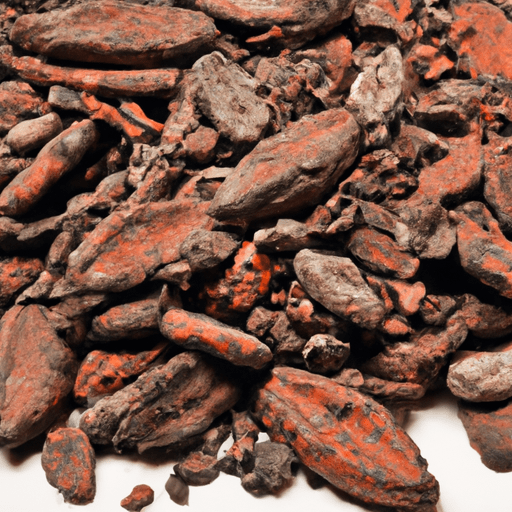Cacao Nibs: The Delicious and Nutritious Superfood
Cacao nibs are small pieces of roasted cocoa beans that have been separated from their husks. These tiny powerhouses are not only packed with flavor but also brimming with health benefits. In this blog post, we will take a closer look at these delectable and versatile ingredients, exploring everything from their rich taste to their fascinating history. So grab a handful of cacao nibs, sit back, and let’s dive into the world of this culinary gem.
Taste and Texture
Cacao nibs have a distinctively bold and intense chocolate flavor. Their taste is often described as slightly bitter with a hint of fruitiness. When eaten on their own, they offer a satisfying crunch and a delightful texture. These little bits of cocoa goodness can provide a memorable sensory experience, especially for those who appreciate the unique taste of dark chocolate.
Common Uses in Cooking
Whether you’re a professional chef or a home cook, cacao nibs can be a fantastic addition to a wide range of dishes. Here are some common ways to incorporate their incredible flavor and texture into your culinary creations:
Baking: Cacao nibs can be used as a flavorful substitute for chocolate chips in cookies, muffins, and bread. They give an enjoyable crunch and a deeper chocolate taste to your baked goods.
Smoothies and Bowls: Sprinkle cacao nibs over smoothie bowls, yogurt, or chia pudding for added texture and a delightful chocolatey twist.
Chocolatey Toppings: Use cacao nibs as a garnish for ice cream, cakes, or even savory dishes like roasted vegetables or stews. They provide an unexpected burst of chocolate flavor, elevating a dish from ordinary to extraordinary.
Hot Drinks: Stir cacao nibs into your hot chocolate or coffee for a natural and indulgent boost of rich, chocolatey goodness.
Nutritional Value
In addition to their culinary versatility, cacao nibs boast an impressive nutritional profile that only adds to their appeal. Here are some key nutritional facts about these tiny superfoods:
Antioxidant Powerhouse: Cacao nibs are rich in antioxidants, which can help protect the body from harmful free radicals. Antioxidants are also known to have anti-inflammatory properties and are believed to promote heart health.
Fiber-Rich: Cacao nibs are an excellent source of dietary fiber, supporting a healthy digestive system and promoting feelings of fullness.
Mineral Boost: These nibs are a great source of essential minerals like magnesium, iron, and zinc. Magnesium, in particular, is essential for energy production and muscle function.
Mood Enhancement: Cacao nibs contain compounds such as phenylethylamine (PEA) and anandamide, which can contribute to increased feelings of happiness and well-being.
A Rich History and Intriguing Facts
Cacao nibs have a history that spans thousands of years, with origins rooted in ancient Mesoamerican civilizations. The Mayans and Aztecs highly prized cocoa for its medicinal and ceremonial purposes. They believed that consuming cocoa provided strength, enhanced libido, and even had mystical properties.
In modern times, cacao nibs continue to be cherished as a natural and healthy ingredient. They are considered a superfood due to their beneficial properties, and their popularity has steadily grown in foodie communities. This trend is not surprising, given their incredible taste and remarkable nutritional value.
Conclusion
Cacao nibs are truly one of nature’s greatest gifts to food enthusiasts. Their intense chocolate flavor, delightful crunch, and numerous health benefits make them a wonderful addition to any pantry. Whether you’re using them in baking, as a topping, or simply enjoying them on their own, cacao nibs are guaranteed to take your culinary endeavors to new heights. So go ahead, indulge in the glorious world of cacao nibs and savor their remarkable flavors and benefits.
Origin of Cacao Nibs:
- Cacao nibs come from the seeds of the cacao tree, scientifically known as Theobroma cacao.
- The cacao tree is native to the tropical regions of Central and South America.
- Ancient civilizations like the Maya and Aztecs were among the first to cultivate and use cacao beans, dating back thousands of years.
- The historical use of cacao by these civilizations ranged from ceremonial drinks and currency to medicinal purposes.
Common Uses:
- Cacao nibs are commonly used in baking, desserts, and as an ingredient in chocolate-making.
- They can be added to cookies, cakes, muffins, and granola for an added crunch and rich chocolate flavor.
- Cacao nibs can also be sprinkled on top of smoothie bowls, yogurt, or ice cream for added texture and taste.
- Some people enjoy eating cacao nibs on their own as a nutritious snack.
Nutritional Benefits:
- Cacao nibs are rich in antioxidants, which help combat free radicals and oxidative stress in the body.
- They are a good source of dietary fiber and can aid in digestion and promote satiety.
- Cacao nibs contain essential minerals like iron, magnesium, and zinc, which are important for various bodily functions.
- They are also a natural source of theobromine, a compound known to have mood-enhancing effects.
Unique Properties and Historical Significance:
- Cacao nibs are the least processed form of chocolate, as they consist of roasted and crushed cacao beans without any added ingredients.
- Theobroma cacao, the species of cacao tree that cacao nibs come from, translates to “food of the gods” in Greek.
- Cacao beans were highly valued in ancient civilizations and were even used as currency.
- The production of cacao and its trade played a significant role in the colonial economies of countries like Latin America and West Africa.
- Today, cacao nibs are enjoyed as a healthier alternative to chocolate, offering intense flavor and nutritional benefits.




Use the share button below if you liked it.
It makes me smile, when I see it.